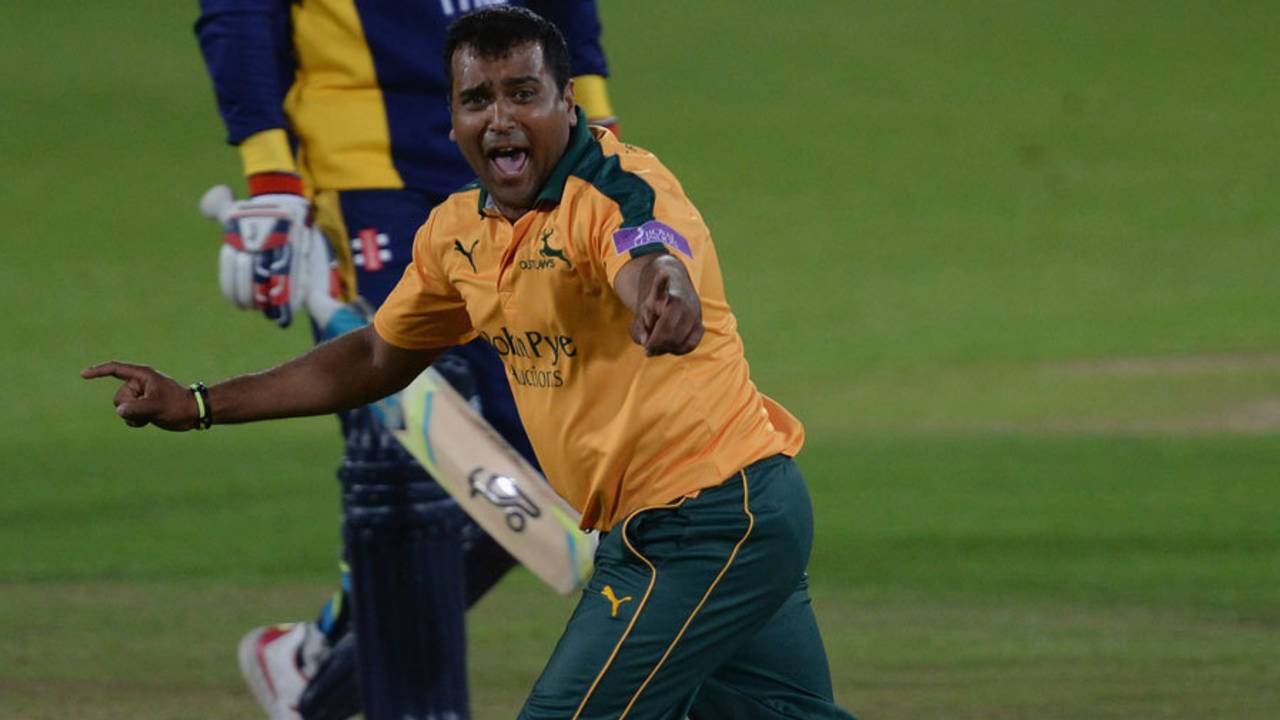A year to the day since he was unveiled as the new managing director of England cricket, Andrew Strauss has announced a new competition aimed at making England more competitive at the next World Cup.
The most eye-catching aspect of the competition is the use of the Professional Cricketers' Association ranking system - effectively a computerised formula - to help select two sides (the North and the South) which will contest a three-match series in the UAE next spring.
A maximum of five England-qualified players for each side - the top four players from each division and the top spinner if not one of those four - will be chosen using the PCA's Most Valuable player rankings from this year's Royal London Cup, the domestic 50-over competition, with the rest chosen by the England selectors. The spinner will only qualify through their bowling exploits, so batting allrounders who bowl a little spin are unlikely to qualify.
The three-match series will take place in Abu Dhabi next March and is currently viewed as a three-year plan aimed at improving England's chances in the 2019 World Cup.
Had the rules been in place in 2015 the players to qualify from the South would have been Steven Davies, Benny Howell, Liam Dawson, Ravi Bopara and, as the spinner, Jack Taylor. From the North, Wes Durston, Samit Patel, Scott Borthwick and Alex Hales would have qualified. Riki Wessels finished ahead of Hales but was not, at the time, England qualified. Stephen Parry would have qualified as the spinner.
Twenty-six players will be chosen for the two squads in total, with no age limits applied. Nobody who has retired from ODI cricket will be selected, ruling out the likes of Marcus Trescothick, Ian Bell, Paul Collingwood or Jonathan Trott, while it is also unlikely that members of England's ODI squad - who will have just finished a series in the Caribbean in March - will be considered for selection.
No sponsorship or broadcast arrangements have yet been made for the games, though there is plenty of time to resolve both issues.
There is no obvious downside to the idea. While it might, potentially, encourage selfish cricket for players on the brink of the top four - and it does raise the vaguely amusing but highly improbable prospect of Kevin Pietersen qualifying in the unlikely event he decided to return to county cricket - the tournament might be considered another small step towards giving England the best chance in 2019.
Might it have been played in England? Ideally, of course. But the schedule, for 2016 at least, precludes that. Not only is there limited space, but the 50-over final does not take place until the brink of autumn. Possibly in 2017, when most 50-over cricket is played in a block and the final is scheduled for mid-summer, that could change, but the UAE - with its excellent facilities and reliable climate - remains the more likely host for now. "Nothing is off the table," Strauss said.
But perhaps the most relevant point is that Strauss has chosen to use this idea to promote ODI cricket. He might have used it to improve the T20 or Test sides, but he came into the job after England had endured another wretched World Cup campaign and promising to give new impetus to List A cricket - the format that seems to have slipped down the pecking order at domestic level - and has stuck to that commitment. The ECB see the 2019 World Cup, which they host, as a once in a generation opportunity to inspire new interest in the game and know how important a part a successful England team could play in that.
This North v South series is not the full answer to England's ODI issues. But anything that encourages greater relevance and intensity in the domestic game is to be encouraged and if this scheme "accelerates the progress of one or two players" as Strauss puts it, then all well and good. And, taken in conjunction with other alterations - the move to something approaching a block format in 2017, the emphasis on improved pitches - it should help.
The MVP rankings were launched in 2007 and the PCA has worked with the ECB's high performance centre at Loughborough to enhance them for this new venture. The system moves beyond basic averages, with batsmen gaining points for strike-rate and a percentage of the team's score while bowlers are rewarded higher for which batsmen they dismiss. The quality of opposition is taken into account as well as overall conditions.
"This is a good opportunity for England, domestic players and the game," Strauss said. "Finding the best players outside the current England set-up, playing them against each other in overseas conditions and placing them in an England environment will help us see if they're ready for international cricket.
"As a player you always like to see how you rank - it gives you recognition and here it comes with the added bonus of getting further into the England reckoning as we look ahead to the World Cup here in 2019.
"And for fans it also gives an added element to the Royal London Cup, putting the spotlight on the players to follow in the 50-over game. This is a shot in the arm for the domestic game."
George Dobell is a senior correspondent at ESPNcricinfo
